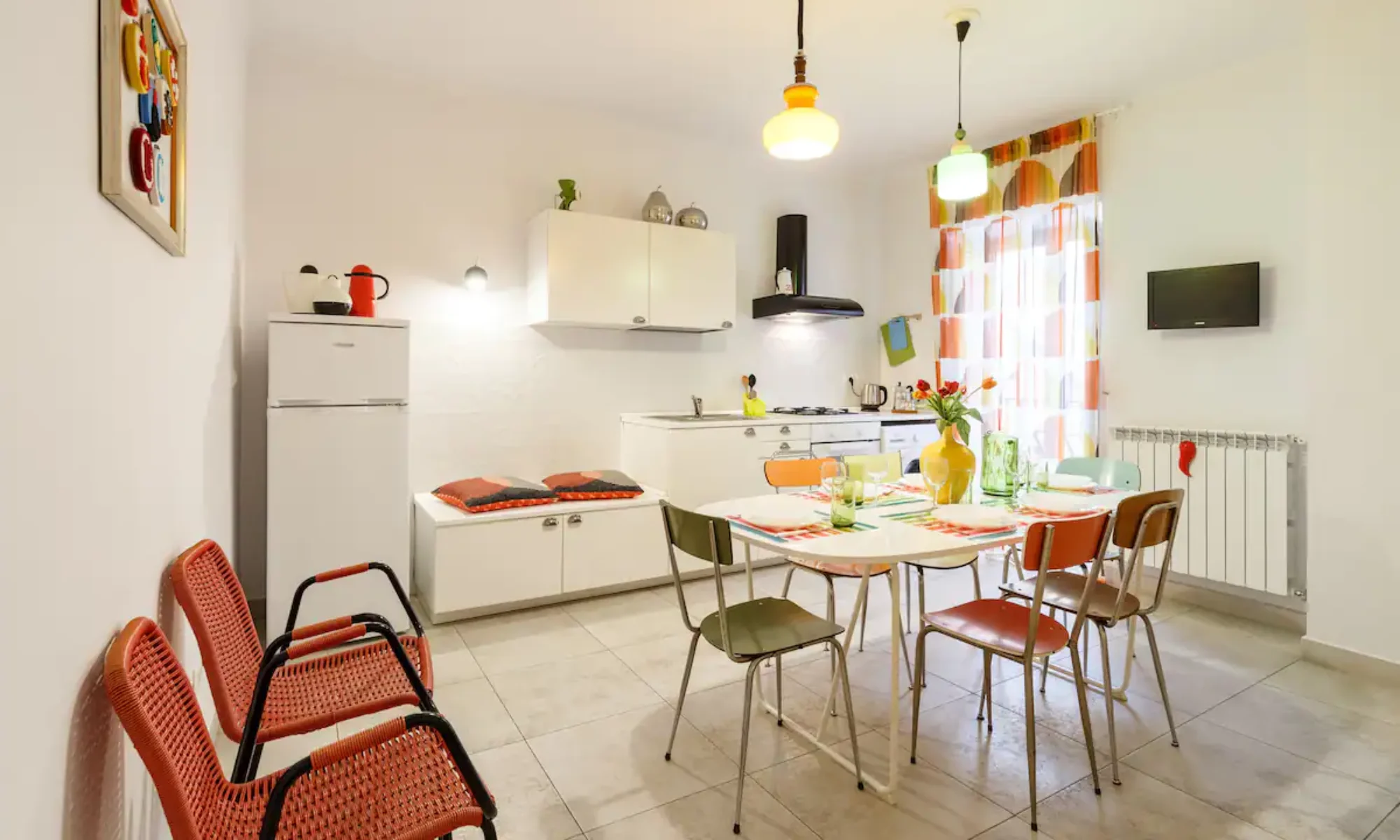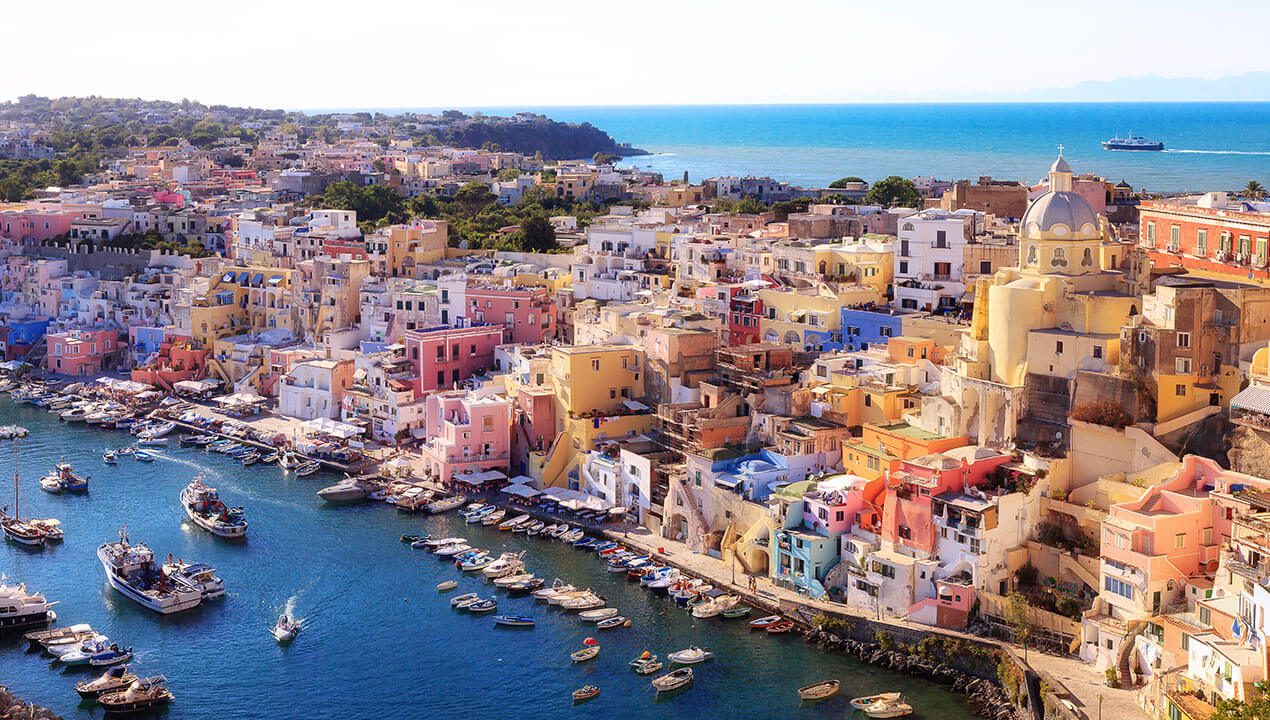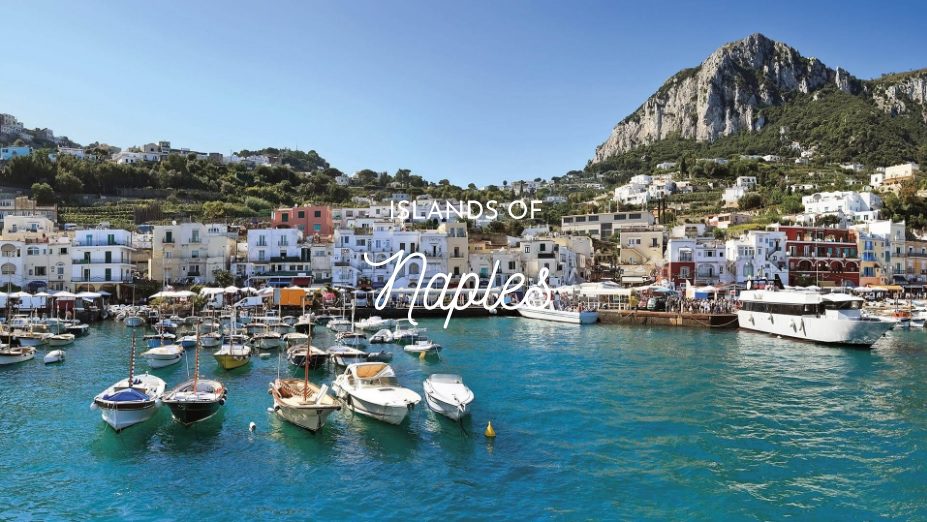Far from the worldliness of Capri and Ischia, scented with lemons and windswept, Procida escapes the radar of mass tourism (August apart) and retains a rarefied, authentic, almost melancholic atmosphere. It is very small (4 km² of land), with a tangle of houses in pastel, pink, yellow, green and blue, its marinas with small boats and fishing nets piled on the piers. The local spirit is fully expressed on the streets and in the squares, with deeply tanned fishermen resting in the shade of sun umbrellas, kids chasing each other through the alleys, and restaurants that never disappoint clients.
But no, even the summer, however, would return invariably, the same as usual. It cannot be killed, it is an invulnerable dragon that is always reborn, with its wonderful childhood. And, it was a horrible jealousy that made me bitter, this: to think of the island again on fire from the summer, without me!
(Elsa Morante, L’isola di Arturo)
Nothing could be better than a slow-paced exploration of this island. Visit Marina Grande, where sailors sell the freshest fish directly from their boats. Stroll along the uphill alleys to Terra Murata, the highest point of the island, with a magnificent landscape on the gulf, the Church of San Michele Arcangelo and Palazzo d’Avalos, former prison abandoned in 1988 and now open to the public. Marina della Corricella is the small fishing village theater of Il Postino, last masterpiece by Massimo Troisi (in addition to interpreting Pablo Neruda’s postman, the actor directed himself and Michael Radford, receiving five 1996 Oscar nominations – including the best film award – and winning a statuette for the best dramatic soundtrack). Tourists enjoy searching for the film’s backdrops (especially visitors from Naples, who exalt Troisi, with good reason, as much as Maradona). The village slopes with its colorful houses from Piazza dei Martiri to the marina. Further south we find the beautiful Chiaia beach, a semicircular cove of fine sand. At the western end of the island there is the informal Marina di Chiaiolella with old fashioned restaurants, a harbor where pleasure boats moor and colorful water taxis that carry you to enchanting beaches. There is still an island to visit: Vivara, crescent green, uninhabited, connected to Procida by a pedestrian bridge. Miraculously immune to overbuilding, it has been recognized as a State Nature Reserve.





